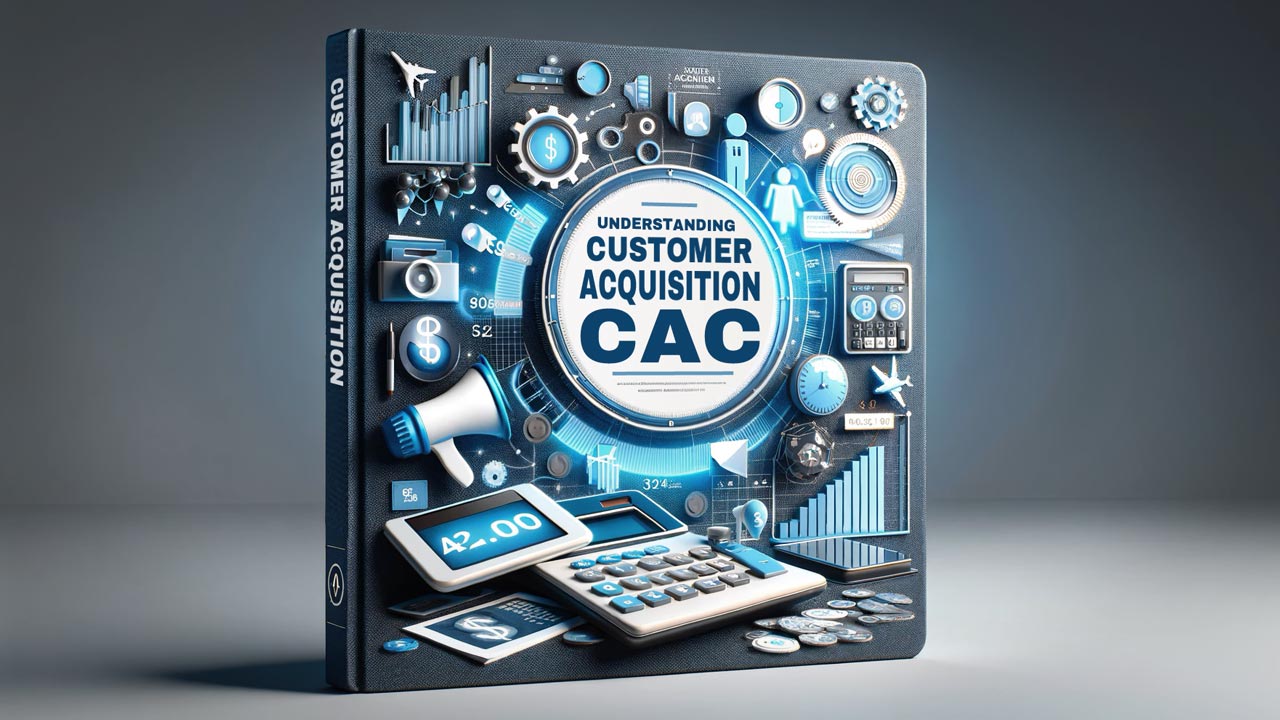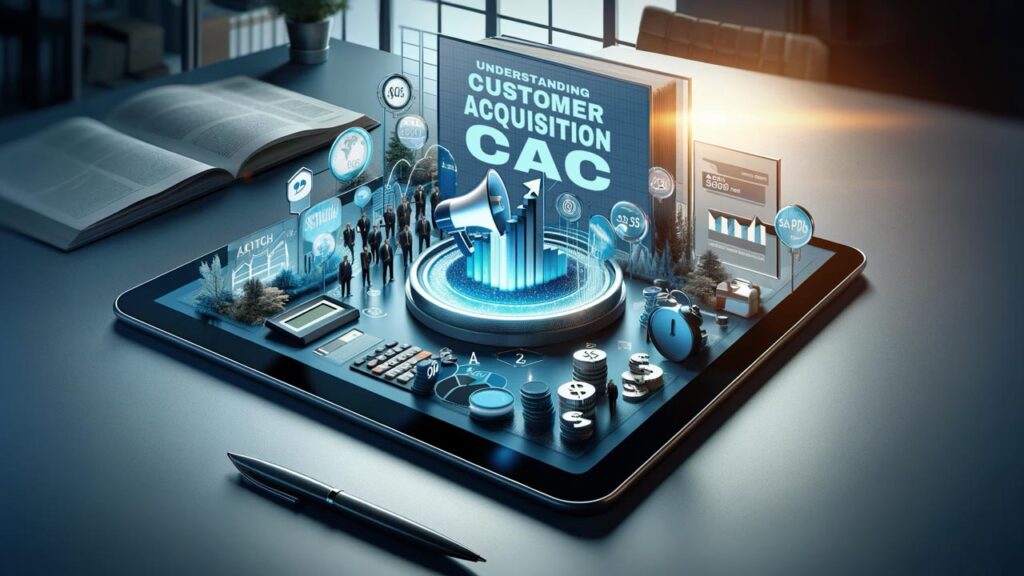Understanding Customer Acquisition Cost (CAC)
Understanding Customer Acquisition Cost (CAC) is paramount. This crucial metric reveals the resources expended to attract each new customer, shaping marketing strategies and financial planning. It’s not just about the cost; CAC is a storyteller, narrating the effectiveness of sales and marketing efforts. Balancing CAC with customer lifetime value is critical, as it dictates profitability and long-term success. This article will guide you through calculating CAC, industry benchmarks, and strategic insights to optimize this vital metric, ultimately enhancing your company’s growth and profitability.
Table of Contents
- Introduction to Customer Acquisition Cost (CAC)
- How to Calculate CAC
- Benchmarking CAC: Industry Averages
- The LTV to CAC Ratio
- Effective Strategies to Reduce CAC
- Detailed Strategies to Optimize CAC
- Case Studies and Real-world Examples
- Frequently Asked Questions
- Additional Resources
Introduction to Customer Acquisition Cost (CAC)
In today’s fiercely competitive business landscape, a thorough understanding of Customer Acquisition Cost (CAC) is essential for any company aiming to thrive. CAC isn’t just a number; it’s a reflection of the effectiveness of your sales and marketing strategies. This metric illuminates the investment made in gaining each new customer, providing key insights into the health and sustainability of your business growth. In this detailed exploration, we’ll delve into the nuances of CAC, from its fundamental principles to the methods of calculation. By benchmarking CAC against industry standards and aligning it with customer lifetime value, businesses can finely tune their strategies, ensuring that each marketing dollar is spent wisely, ultimately leading to a more profitable and successful business model.
How to Calculate CAC
Calculating CAC is fundamental to assessing your company’s efficiency in gaining new customers. To determine CAC, first select a relevant time frame, such as a month, quarter, or year. Next, accumulate all sales and marketing costs incurred during this period. These expenses include advertising spend, employee salaries, creative and technical costs, and any overheads associated with marketing efforts. After compiling these costs, divide the total by the number of new customers acquired within the same timeframe. This calculation yields your CAC, offering a clear insight into the investment required to attract each customer and serving as a critical indicator for guiding marketing strategies and budget allocations.
Benchmarking CAC: Industry Averages
Understanding CAC within the context of industry averages is vital for benchmarking your company’s performance. Industry averages for CAC can vary significantly, reflecting diverse marketing strategies and customer engagement models. For example, the SaaS industry typically sees higher CACs due to its complex sales cycles, while eCommerce businesses might have lower CACs owing to direct-to-consumer marketing efficiencies. By benchmarking your CAC against these industry averages, you can gauge where your company stands in terms of acquisition efficiency. This knowledge helps in strategically directing your resources to areas that promise the best return on investment and aligning your strategies with industry-specific best practices.
The LTV to CAC Ratio
The Lifetime Value to Customer Acquisition Cost (LTV to CAC) ratio is a critical metric in evaluating the long-term financial health of a business. It compares the lifetime value of a customer (LTV) – the total revenue a business expects from a customer throughout their relationship – to the cost of acquiring that customer (CAC). An ideal LTV to CAC ratio is typically around 3:1 or 4:1, indicating that the revenue generated from a customer is three to four times the cost of acquiring them. This ratio is crucial for businesses to ensure sustainable growth, allowing them to assess whether they are investing appropriately in customer acquisition while maximizing customer value.
Effective Strategies to Reduce CAC
Reducing Customer Acquisition Cost (CAC) is crucial for enhancing business profitability and efficiency. Effective strategies include optimizing marketing channels by focusing on those with the best ROI, refining conversion funnels to improve lead-to-customer rates, and leveraging data-driven customer segmentation for targeted marketing efforts. Additionally, embracing a product-led growth strategy can reduce reliance on expensive marketing tactics by letting the product itself drive customer acquisition. Implementing personalized onboarding experiences and referral programs can also significantly lower CAC, turning existing customers into brand advocates and reducing the need for extensive marketing expenditures.
Detailed Strategies to Optimize CAC
Optimizing Customer Acquisition Cost requires a multifaceted approach. Key strategies include:
- Conversion Rate Optimization (CRO): Simplify the conversion process on your site. This includes making mobile submissions easy, clear website copy, and a seamless sales process, allowing conversions at any time.
- Value Addition: Focus on what customers value most. Collect and implement feedback for product enhancements or new features that increase customer satisfaction and retention.
- Customer Referral Programs: Encourage existing customers to refer new leads. Lowering CAC through referrals can be efficient, as these customers often have a lower acquisition cost.
- Streamlining Sales Cycles: Reduce the sales cycle duration to facilitate more sales within a year. Effective CRM and prospecting tools can help connect with qualified leads more efficiently, enhancing conversion rates and reducing CAC.
Case Studies and Real-world Examples
1. SaaS Company: Leveraging a Referral Program
A SaaS company successfully reduced its CAC by implementing a customer referral program. By incentivizing existing customers to refer new users, the company saw a significant increase in organic leads, which had a much lower acquisition cost compared to traditional marketing methods.
2. eCommerce Business: Digital Marketing Optimization
An eCommerce business optimized its digital marketing campaigns by focusing on high-converting channels and refining its target audience. This strategic shift led to a more efficient customer acquisition process, lowering their CAC while maintaining steady growth in customer base.
3. B2B Service Provider: Streamlining the Sales Process
A B2B service provider streamlined its sales cycle by implementing advanced CRM tools and focusing on lead quality over quantity. This approach allowed for quicker conversions, reducing the time and resources spent on each customer, resulting in a lower overall CAC.
These examples demonstrate how diverse strategies can be effectively employed across different industries to reduce CAC, leading to enhanced business efficiency and profitability.
Frequently Asked Questions
Additional Resources
- Corporate Finance Institute Article on CAC
- Userpilot.com Article on CAC
- HubSpot Blog on CAC










Leave A Comment